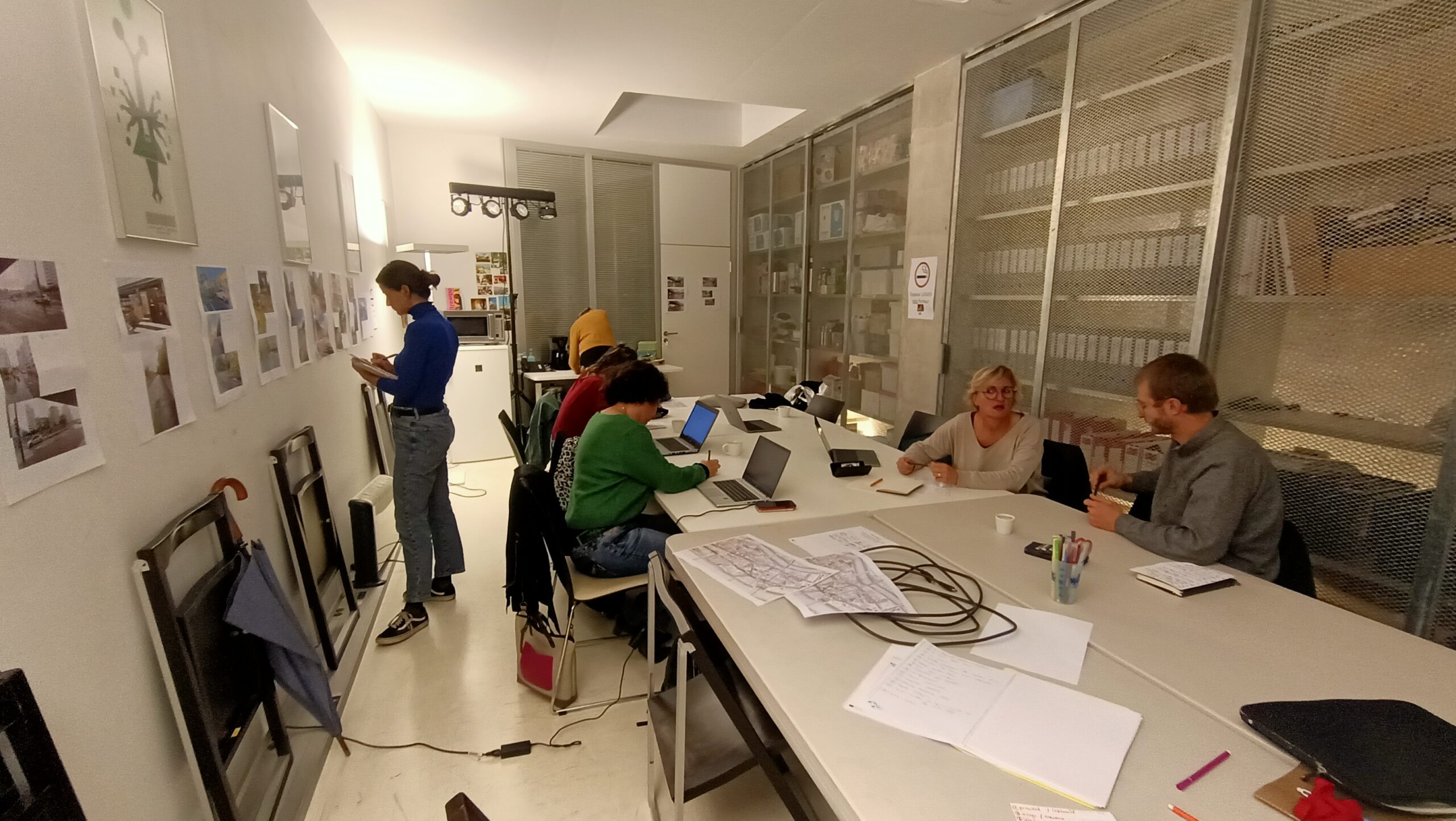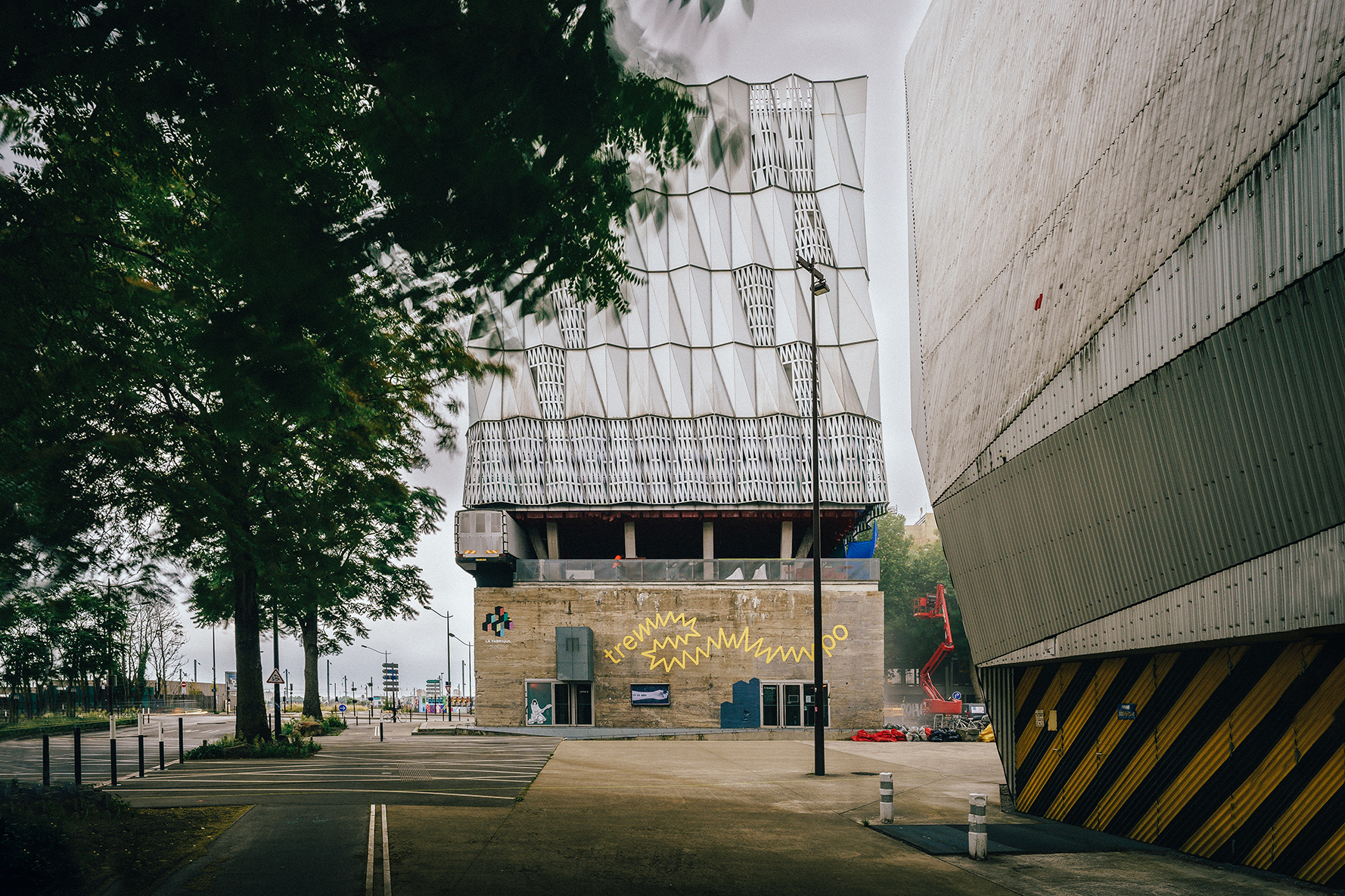Local hub diary #4 - Nantes: Between major works and social transformations, Trempo is at the heart of an urban experimentation territory
Meet Coralie Falher, Project Officer at Trempo, coordinator of Slash Transition and Head of the local hub in Nantes. Founded in 1990 and settled since 2011 in the heart of the Île de Nantes and its creative district, Trempo is dedicated to the practice, creation, production and publishing of emerging music.
Hello Coralie, can you explain to us this concept of local hub?
The aim of these collective working sessions is to produce a brief which will be used as a guide for the artist who will be welcomed in residence. This brief will give explanations about the context, the major players in the area and the places and spaces to visit. The artist will also find suggestions for approaching the sound creation work. Please note: this is not a commission, but a device to support and shed a light on the context as each artist in residence will come from another country of the cooperation.
At Trempo, which area are you working on and how did you define it?
At first, we thought of an area around Trempo. Our structure is located on the west side of the Île de Nantes. But in the end, it was a process that took time and our conversations with the territory’s actors progressively led us to extend this perimeter from the west of the island to the boundary of Wattiginies, which is the axis that divides the island in two between west and east, whilst still integrating the historic district of République-Les Ponts. What’s interesting is that there are a lot of changes happening in this part of the Île de Nantes, including a massive building site to the south of Trempo. It also seemed important to us that the area should not be too large. In fact, in the space of three months, we had to choose places considered as symbolic for various reasons and be able to present concrete elements to the artist and the partners.
Who took part in these local hubs and how did the group come together?
When we started thinking about the experimental area, we talked to partners with whom we usually work with, starting with the City and Metropolis of Nantes. At first, we spoke to organisations such as Ardepa and the Bien Urbaines agency to gain more insight on architectural and urban aspects of the area. Then we contacted organisations that were implanted on the area for artistic experimentation we had defined: Wattignies (a cultural and solidarity-based third-space), the Village solidaire des 5 ponts, and the “Des Ponts entre nous” (an association which brings together residents of the République, Mangin and 5 Ponts neighbourhoods). We then met with people from the academic field such as a sociologist, specialising in transitional spaces, the connection between art and public space as well as art and urban planning. Other organisations were occasionally met such as Nantes City Council’s Southern Neighbourhood Department, SAMOA (Société d’aménagement de la métropole Ouest Atlantique) and Naolib, Nantes’ public transport network. Finally, we have reached out to artists as the primary aim of this working group is to prepare for an artist’s work in residence, so this was essential!
So you are financially supported by the public authorities?
Yes, we are financially supported by the European Commission and the Pays de la Loire region for this project. As I was saying, the City and the Metropolis are also the first contacts we’ve had in our discussions regarding the local hub. We were able to discuss the current transformations as well as the ones that will take place in the years to come, to share projections for the different timeframes, and to see what the priorities are, I would say, for the metropolis and the city regarding cultural projects.
How is your area in transition? What topics have you identified?
The most striking transition is the one linked to the construction sites and works in progress. This transition is intense, has been going on for years and involves many new constructions with major social impacts. This social issue was a recurrent theme in our discussions, particularly the direct consequences of a long construction site with major works: noise, traffic flows and how to live in the midst of it all. Thoughts around the former meeting the new are also an example of our considerations.
What was the point of view of the local hub artists?
There were quite a few questions at the beginning. This is not an easy subject and the artists from the working group made a major contribution to the discussion. For example, when we collectively decided on the symbolic locations, it was necessary to get their opinion. Their way of understanding this subject helps to empathize with the point of view of the artist that will be in residence and to ask the best questions from that position.
In your opinion, what’s the benefit of conducting these discussions as part of a European project?
The purpose of these European projects is to enable this cultural exchange between different countries. It’s also interesting to compare our findings with those of our partners, to see at what point we come together on the same issues and to see at what point our realities are too far apart. Despite our differences regarding urban, social and political contexts throughout the five territories, many of us are facing similar issues such as gentrification for example. Our Georgian partner, Mutant Radio, will also be in charge of creating the narrative of this project to create a link between both these different areas and the artistic residencies.
What is the guideline following the latest meetings of the local hubs?
Each local hub will draw up a brief with its conclusions. Then, from December to January the partners will suggest three to five artists, and an artistic committee will select the final artists for each territory. In March, these five artists will come to Nantes for a ten-day training course to take notice of the different working groups’ results and to examine in greater depth how a project of this kind can help them strengthen their professional careers. After that, everyone will be ready for the residency and start the artistic work.
What results are you hoping to achieve with this project?
One of the main objectives of this project is for the artist to be able to build on this experimental work once they are back in their own city, to find other opportunities, to take part in local discussions and to think about their place on their territory. Ultimately, Slash Transition’s aim is to try and question the artist’s place at the heart of the local environment and to reflect on their status as a citizen. These are not things we are currently working on, it’s still a bit early, however these are things we wish to tackle and question during the four years of the project.

Members of the Nantes local hub : Nicolas Bugel (president of the association Des Ponts Entre Nous), Clarie Moureau (coordinator of the Village solidaire des 5 Ponts), Thomas Cochini (artist, composer and agronomist), Raphaèle Pilorge (head of cultural action at Trempo), Benoît de Vasson (Naolib), Cassandra Eloi and Sarah Huvelin of the Wattignies, Colombe Lecoq-Vasson (artist, graduate of Nantes Saint-Nazaire School of Art and exhibition curator), Fanny Broyelle (sociologist, former co-director of Pick Up Production), Lénaïc Le Bars, Sophie Maitrallain and Karine Pierre (SAMOA), Géraldine Gouret (Development Supervisor on the Île de Nantes at the City Council’s southern districts department), master’s students at the Media Lab of the Nantes Atlantique School of Design, Chloé Nataf (head of the Music and Transition department at Trempo), Coralie Le Falher (coordinator of the Slash Transition project at Trempo).
Interview by Cécile Moroux
Article’s photo: Jeremy Jehanin

